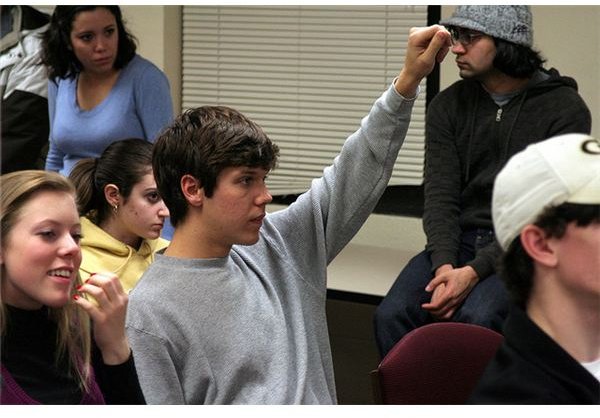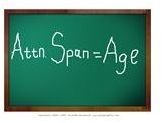Increasing Attention Span and Engagement in the Classroom Through Chunking: A Method That Works for All Grades
It should come as no surprise to hear that teachers today are in direct competition with text messaging, Facebook, TV, Twitter, MySpace, blogs, podcasts, iTunes, and the latest apps. The claims that “students don’t have the same attention span these days because they are the tweet-text-info junkie generation,” or “so many of my students have ADD/ADHD - it is impossible to keep their attention,” has some validity.
However, it does not give educators an excuse to just mail it in and not teach. So how do we as teachers increase attention span and engagement in the classroom? I present to you a simple equation to consider that I have discovered in my 16 years of teaching and can help with this challenge:
Attention Span = Age
Figuring Out Their Limits: Attention Span Math
The first step is to do attention span math for your classroom. For the K-12 instructor, that is pretty simple. You just take the average age in your class and then add 5 minutes. The result is a chunk of teaching time that you can reasonably keep the attention of your student. For example, a Kindergarten teacher should chunk classes into 10 minute segments (age 5 + 5 minutes) which explains why circle time and stations are effective teaching techniques for that age group.
A fifth grade teacher should chunk into 15-20 minute segments (10 years of age + 5 minutes) which explains why Five-a-Day, Silent Sustained Reading, and cooperative group projects work well with the upper elementary students. Junior high teachers should consider the 18-20 minute chunk. High school instructors should try to chunk classes into 20-25 minute blocks.
The Attention Span Antidote: Chunky Lesson Plans

Now that we have a handle on the attention span myth, let’s think about the impact of this formula on literature and establishing engagement in the classroom. For example, in an English class you can do 20 minutes of journal writing and discussion, 20 minutes of lecture about the novel you are reading, and then 20 minutes of small group discussion.
I know some of you are thinking, “Okay, Mr. English teacher wise-guy whose class lends itself to doing a variety of activities, this whole attention span chunky thing is great for you, but what if I teach a hard-core science class or a history class?”
If you teach a subject that requires you to do extensive content delivery, which usually translates into extensive lecturing, you have to get creative and figure out ways to mix it up if you plan on keeping the attention of your students.
For example, you can build interactive applications into your PowerPoint presentations. You can add a slide in that asks a question that you can pose to the class and try some classroom discussion. Or, try breaking from lecture by giving them a quick three-minute problem or issue and asking them to work it out and then share the answers with the classmates around them. You can have them partner up and ask them to explain a concept that you just lectured on to their partner and put it in their own words.
Take full advantage of educational technology that is out there, such as the Smartboard or clickers to make your “lecture” more interactive. I know that there are some great lecturers out there, but you have to ask yourself how much teaching you are doing if half your students have the “nobody-is-home" glazed stare going on or if they are exhaling massive amounts of bored breath. Research has shown that students retain about five percent of what they hear in lectures, and if the attention span equation has any validity to it, that five percent is decreasing after the first 20-25 minutes. Is that effective teaching?
The New Reality
The reality is that most teachers were traditional students, had success in traditional classrooms and now use the same traditional techniques. However, we live with the reality of a new generation that has a variety of factors fighting for their attention. Use the attention span equation and mix up your teaching methods to include visual, interactive, interpersonal, and hands-on techniques of delivery. You will experience less “bored breath”–and, instead, get more-engaged students. Afterall, engaged students = learning!
References
- Photo by Hector Alejandro under CC by 2.0 via Flickr
